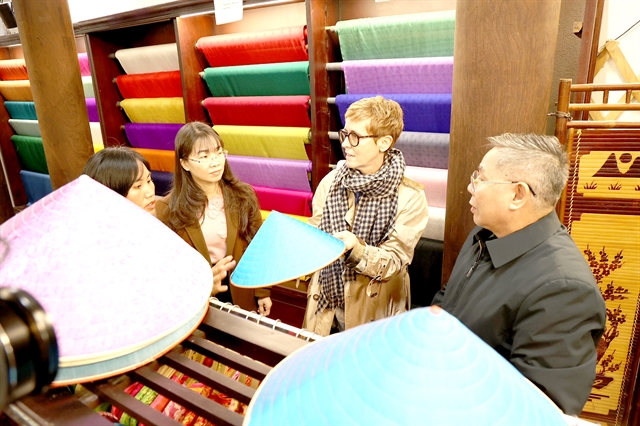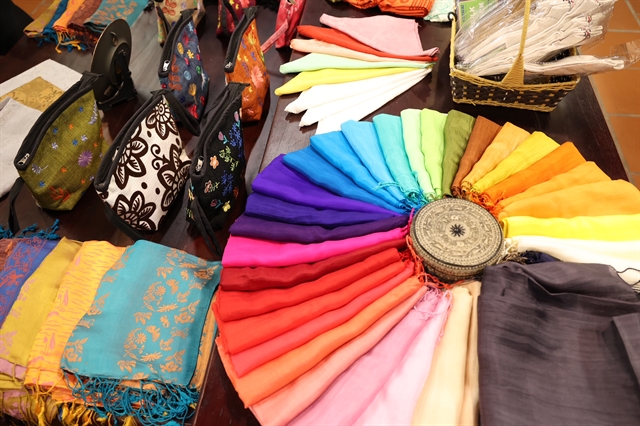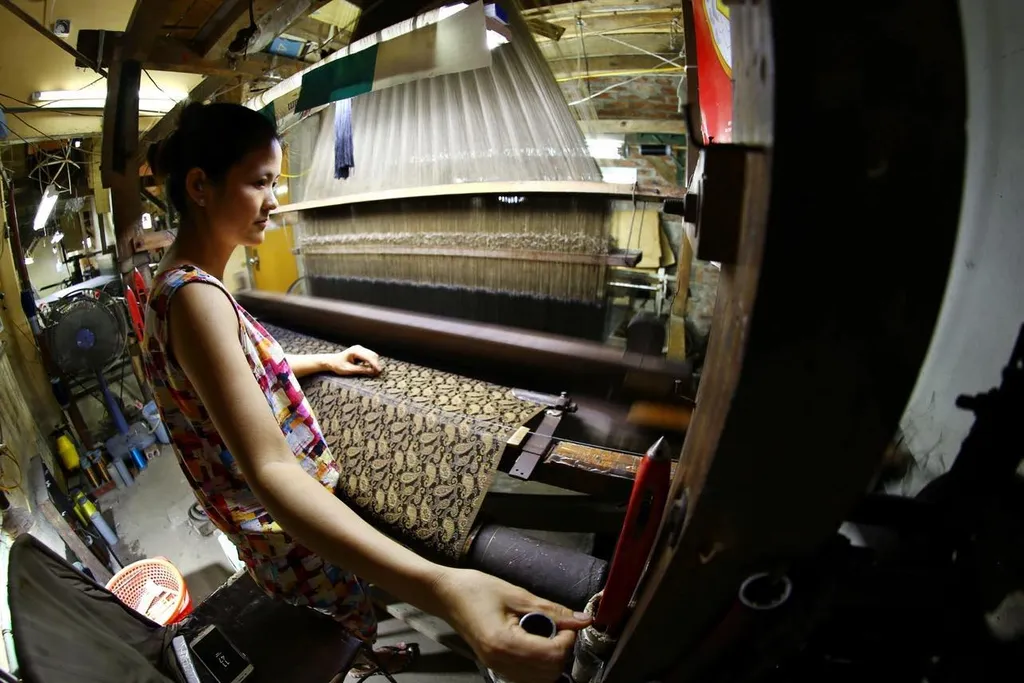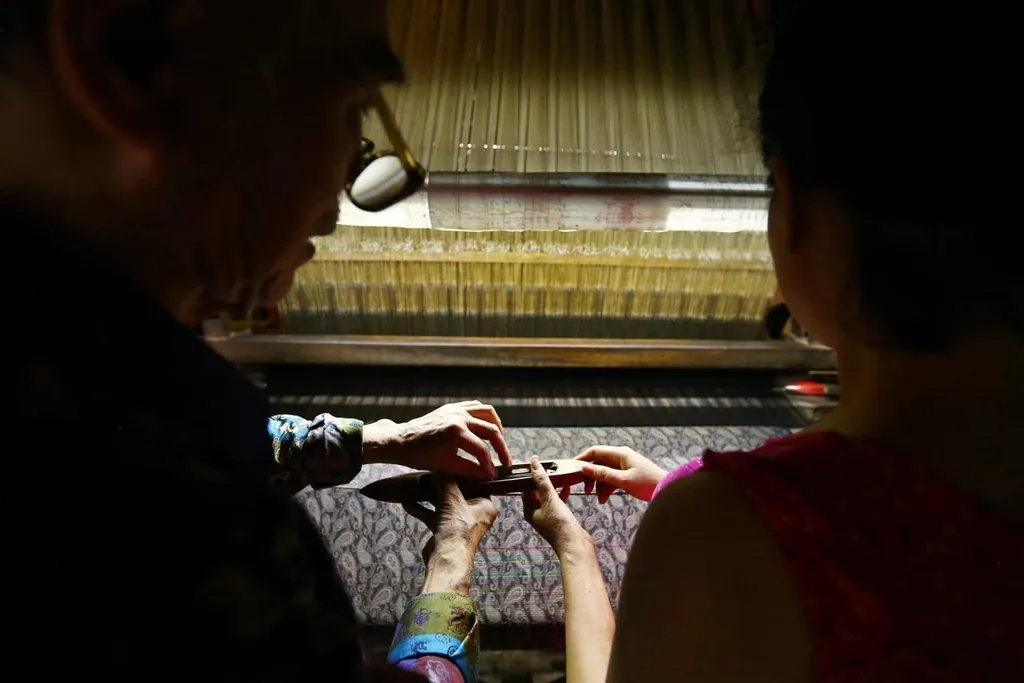 Life & Style
Life & Style

 |
| Nguyễn Văn Chí, director of the Hà Nội Rural Development Sub-Department, highlights the importance of preserving Vạn Phúc’s traditional heritage. — Photos courtesy of Hà Nội Rural Development Sub-Department |
HÀ NỘI — As an ancient Vietnamese village located on the Nhuệ River, in Vạn Phúc Ward, Hà Đông District, Hà Nội, Vạn Phúc Village has the oldest famous silk weaving profession in Việt Nam with a history of over 1,000 years.
Vạn Phúc silk is imbued with the beauty of traditional Vietnamese culture and has long been famous throughout the country and around the world.
The artisans of Vạn Phúc have long been renowned for their skill, producing silk from locally sourced natural fibres. Known for its lustrous sheen and delicate texture, Vạn Phúc silk has remained popular over generations.
Nearly 300 households in the village are currently involved in weaving and trading silk products.
In recent years, the Silk Street area has been thoughtfully arranged to create a memorable shopping experience, offering new designs, handicrafts and fashionable items that continue to attract visitors.
Vạn Phúc artisans have recognised the importance of preserving the unique character of their silk products in the face of rapid change.
 |
| Vạn Phúc silk village is home to nearly three hundred households dedicated to silk weaving and trade. |
In response, they have gradually revived traditional weaving techniques, producing high-quality, authentic silk products.
“To protect our brand, products crafted by association members now carry a distinctive hallmark, assuring quality and drawing interest from domestic and international customers alike,” explains Phạm Khắc Hà, President of the Vạn Phúc Craft Village Association.
Each resident of Vạn Phúc shares a deep commitment to their village’s heritage.
Artisan Nguyễn Thị Tâm, who heads the Triệu Văn Mão Silk Weaving Workshop, belongs to the only family in Vạn Phúc with two generations of artisans.
Despite being the daughter-in-law of master artisan Triệu Văn Mão, she is dedicated to preserving her family’s legacy.
“My love for the craft drives me to preserve and develop this tradition," she said.
"While keeping our beautiful traditions alive, I’m also introducing innovations, researching new techniques and using modern methods to meet fashion trends and consumer demands both locally and globally.”
 |
| Vạn Phúc artisans are reviving traditional weaving methods, bringing high-quality silk products to market. |
To bolster tourism, local authorities have developed a network of silk streets featuring supporting industries, such as food streets, an ornamental plants street, an antiques exchange and options for accommodation and shopping.
Additionally, the Vụn Art Cooperative has been established to create income for disabled artisans by using silk offcuts to craft silk paintings for export.
 |
| To make silk products, the craftsmen of Vạn Phúc Silk Village have always had to carry out an elaborate production process including many stages such as: silk, starching, weaving... |
Nguyễn Văn Chí, director of Hà Nội’s Rural Development Sub-Department, said that Vạn Phúc residents take pride in their traditional values and see it as their duty to preserve and pass them on.
However, he acknowledges that to remain relevant on the global stage, the village must develop new designs that appeal to international tastes, thereby strengthening exports and enhancing its reputation.
 |
| Artisan Đỗ Quang Hùng instructs crafters to create the best Vạn Phúc silk products. |
In line with Hà Nội’s efforts to preserve local craft villages, the city has partnered with French consultants to restore Vạn Phúc silk village as a living museum.
This project aims to showcase artefacts and cultural relics that span the village’s rich history, drawing in visitors interested in its cultural heritage.
*The article was written in collaboration with the Hà Nội Rural Development Sub-Department.




